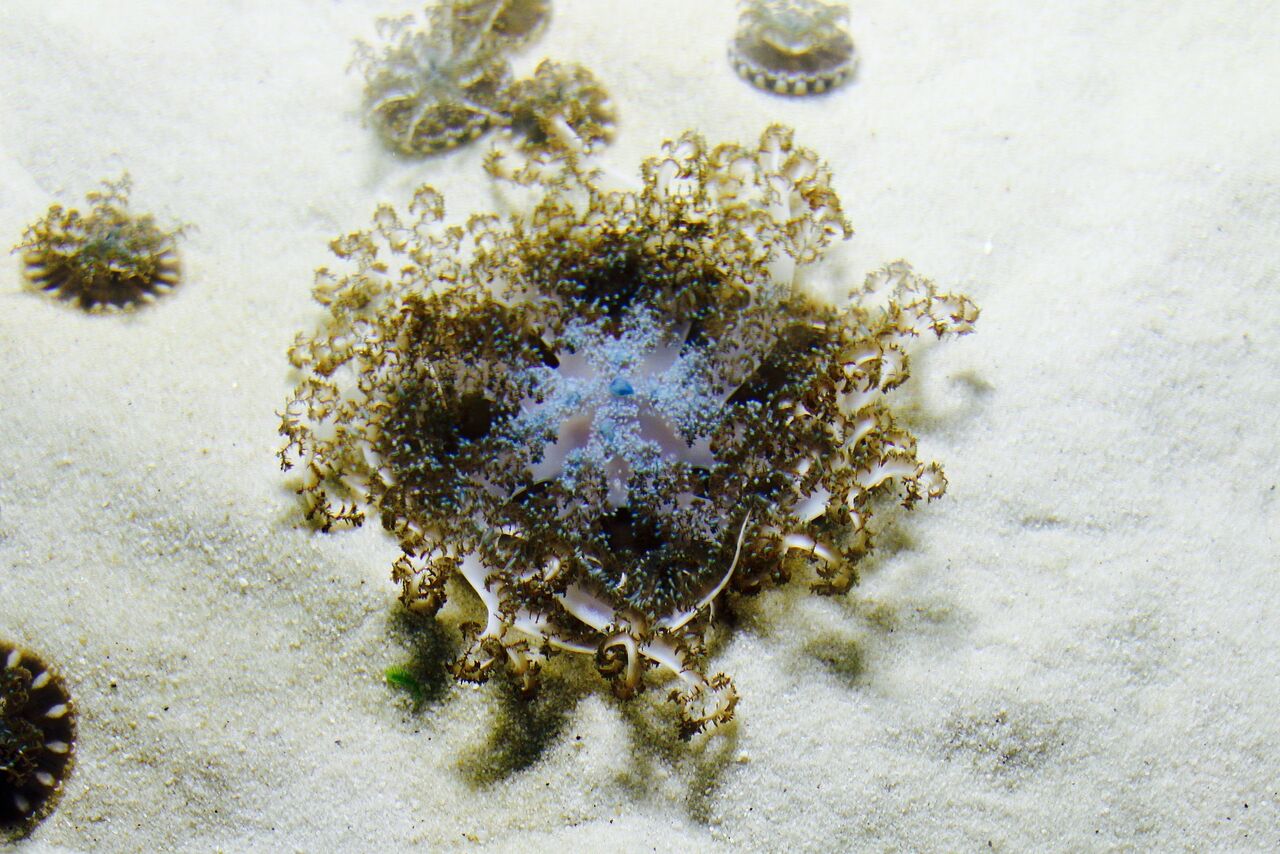Appearance and lifestyle:
Upside-down jellies (Cassiopea xamachana) hosts photosynthetic algae, which provide most of the energy needed for the jelly’s day-to-day activities and is also responsible for the brownish colour of the jelly. Upside-down jellies mostly lie around and “suntan” (for the algae to photosynthesise), only ever moving if disturbed or if they need to find a better spot to "tan". The saucer-shaped bell of the jelly acts as a suction cup to stabilise the animal on the seabed. They grow up to 25cm in diameter.
Habitat:
Commonly found in mangrove ecosystems and can tolerate a wide range of salinities.
Diet:
They feed on photosynthetic algae and can catch and eat food like zooplankton for energy.
Threats:
Pollution, climate change, poor water quality etc.
Commonly found in mangrove ecosystems.
Grow up to 25cm in diameter.
Hosts photosynthetic algae.
